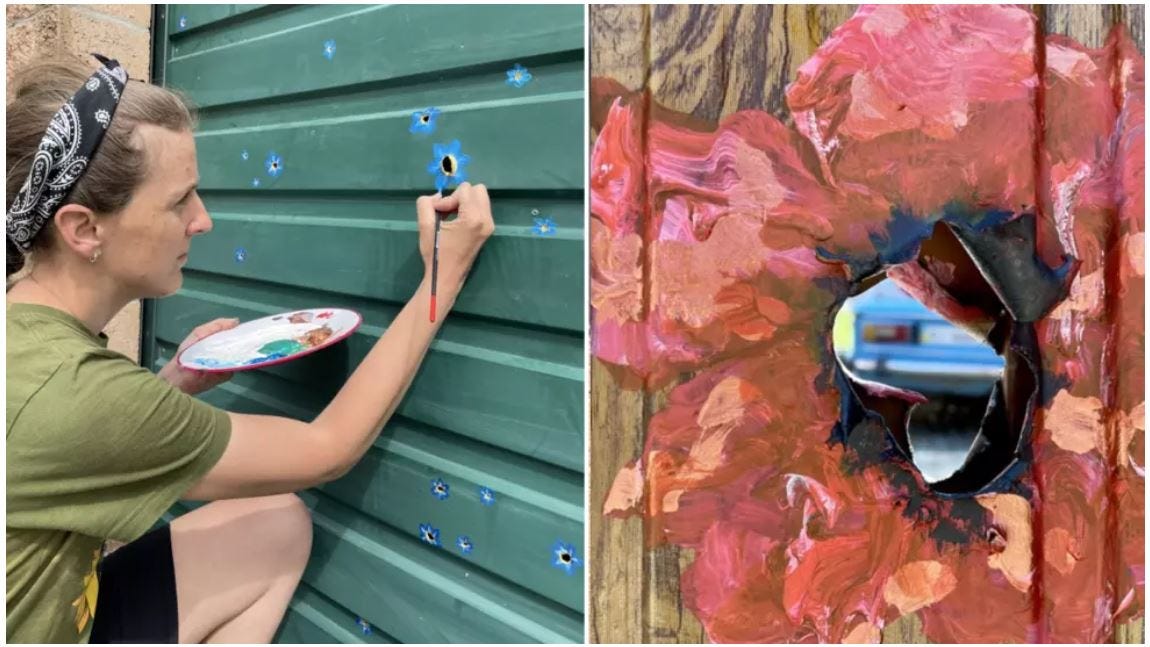The Quite Craving for Something Real
On art as rebellion, disconnection, stillness & refuge.
The other day, I went for a walk but barely noticed the rhythm of my own steps or the scent of sun-dried bushes. Not because they weren’t calling my name - but because my mind was still tangled in everything I’d seen on a screen. So deep in thought, I nearly broke the first unwritten rule of hiking: always say hi to fellow trail enthusiasts.
In a world so densely packed with bits, there is hardly enough space to think.
How are you meant to notice the moving leaves?
In a world ruled by fear of uncertainty, where we spend most of our days staring at a screen, disgusted by what’s coming out of it-
How are you supposed to feel someone’s heartbeat?
What can we do as a whole to bring on calm seas?
(Low-key want to connect? Let’s talk. It’s free. Just a softer digital life, some good laughs and maybe a story or two. Book me here! Xxx)
If thoughts are the most powerful living entities we know of,
Then art is how those thoughts survive the storm.
While algorithms shake and the ground shifts beneath our feet,
when empires tremble or markets collapse,
art is the most formidable asset we have.
And a form of rebellion for people craving something real.
Because art has always been a way of saying no.
No to war.
No to lies.
No to silence.
No to forgetting.
When Picasso painted Guernica, he wasn't just making a mural - he was making a statement no general could unsee.
It wasn’t just art; it was protest. A scream against fascism, war, and destruction.
Art is resistance.
Not always loud.
But it is always a refusal to destroy the human spirit into metrics, data, and compliance.
Even in moments of great violence or decay, art says: you still have a soul.
That’s why in Ukraine, amidst craters and rubble, people paint flowers on bullet pierced buildings.
Because beauty, fragile and fleeting - is a statement of resilience.
Even language itself has been used to rebel.
Kerouac wrote like he was on fire, tearing through the conformity of post-war America. Rejecting its ideals.
Choosing rawness, madness, jazz, and holy moments of being awake.
[...] the only people for me are the mad ones, the ones who are mad to live, mad to talk, mad to be saved, desirous of everything at the same time, the ones who never yawn or say a commonplace thing, but burn, burn, burn like fabulous yellow roman candles exploding like spiders across the stars and in the middle you see the blue centerlight pop and everybody goes “Awww!” - Jack Kerouac, On the Road
A declaration of war against numbness
where wandering is sacred,
observation a delicacy
silence electric
& the body divine.
And then there are the scientists,
seen from the outside as rationalists, separatists trying to understand the world by dividing it into pieces, humans of pure reason; but are they?
Santiago Ramón y Cajal, the father of modern neuroscience and a Nobel Prize winner in Medicine,
who drew the human brain with such elegance with
his ink that for me is like poetry.
He called neurons “the mysterious butterflies of the soul.”
Even Carl Sagan wrote like a mystic,
insisting that “science is not only compatible with spirituality; it is a profound source of spirituality.”
To him, science wasn’t sterile - it was sacred.
A form of storytelling.
And David Bohm - physicist, philosopher, seeker of the invisible, belongs in this team too. A student of Einstein and a close companion of Krishnamurti, he saw the universe not as separate parts, but as one deep, flowing movement. A way of touching mystery where the hardest equation could make you cry, where math is stillness, beauty and awe.
These rebels remind us:
Whether with a paintbrush, a telescope, or a typewriter
that art is not a luxury. It is a force.
A force that says: we are not machines.
We sing out loud to red summer moons, write with sweat & blood, breath with words, draw in the dirt - because art is presence.
In a world where you're told to shrink, scroll, and obey -
art is a space rocket straight to liberation - a way to begin again.
And in our own lives, perhaps rebellion begins when we put down our phones,
and pick up a pen, or a brush, a guitar, take a walk
or simply sit still long enough to notice the shape of a tree.
In the end, art may not change the world overnight.
But it can change the people who will.
Un abrazo,
Alejandro xxx





I think I can never get tired of the neurons drawn by Cajal.